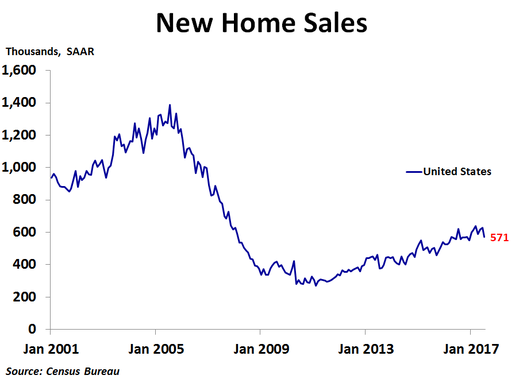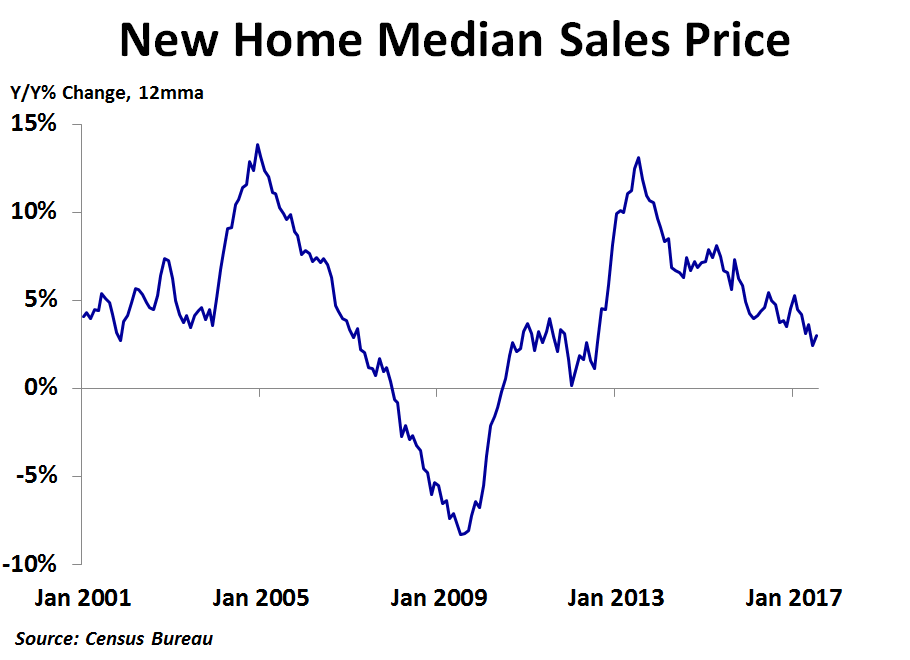In the second quarter, the national median price was up 1.8% from the prior year. Prices were up 7.6% in the Midwest and 2.4% in the West, but were down 1.6% in the South and 6.6% in the Northeast. The Census Bureau does not report regional median prices by month, only quarterly and annually. In July, the national median price rose to $313,700, a 0.7% increase from the prior month, following a 3.5% drop in June. Compared to a year ago, the median price was up 6.3%. This was the sixth straight month where the direction of price changes on a year-ago basis was opposite that of the prior month. The 12-month moving average trend of price growth has been slowing over the last couple of years, and in June reached a new cyclical low of 2.4% but bounced back slightly to 3.0% in July. This suggests new home prices may be getting very close to a cyclical peak.
With inflation slowing and still below the Fed’s target of 2.0%, the Fed held rates steady at July’s FOMC meeting. However, the bigger issue is when the Fed will start to reduce its balance sheet, which may begin in September. This might push up mortgage rates, but inflation and politics will also be factors.


 RSS Feed
RSS Feed